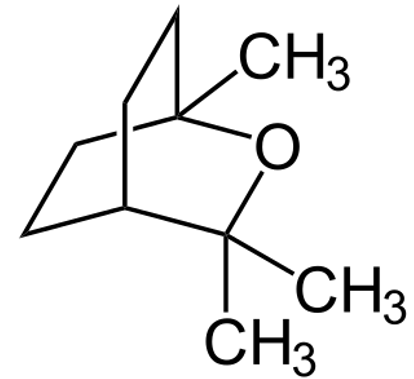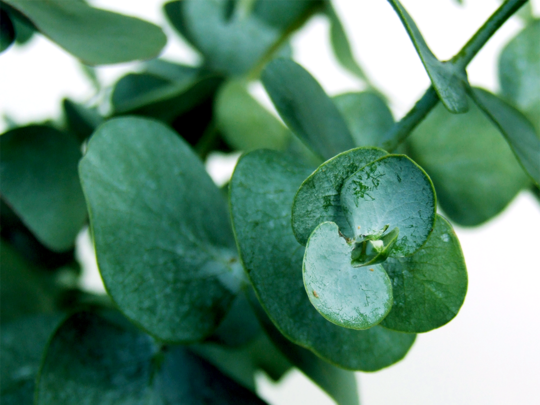Phytogenic ingredients in the spotlight: Eucalyptus - not only the favorite plant of the koalas (part 3)
In the first two parts of our Eucalyptus series we introduced you to this fantastic plant and told you about its history and traditional use as a medicinal plant. Now it's time to shed some light on the active ingredients - after all, they are what many of the effects of eucalyptus are based on.
Active ingredients in the spotlight

Besides its use as a special wood supplier and food source for koalas, the leaves of the eucalyptus are of particular interest. They contain a lot of essential oil, which is the major component responsible for the medicinal effectiveness.

Eucalyptus oil is mainly extracted from the leaves (and sometimes from branches as well) by steam distillation. The main compound within the oil is the saturated monoterpene 1,8-cineol, also known as eucalyptol. Eucalyptus globulus is a major source for eucalyptus oil, but also many other eucalyptus species are rich in cineol, for example E. radiata, E. maideni, E. cinérea, E. leucoxylon, or E. bicostata, just to mention some.
Important components
The crude eucalyptus oil contains a high number of aldehydes, which would cause irritation of the respiratory tract and therefor additional production steps are necessary. Crude oil is treated with lye and consequently, the aldehydes are separated to obtain the refined essential oil, which consists of about 70-90% of cineol (Vetter 1998, Graßmann 2000). Other important components of eucalyptus oil are the following and will be described below:
- 1,8 Cineol (Eucalyptol)
- Alpha Pinene
- Beta Pinene
- Limonene
- Alpha phellandrene
- P-cymene
1,8 Cineol (Eucalyptol)

1,8 Cineol is the main active ingredient of eucalyptus oil, accounting for over 70 percent, and also the component of other essential oils showing relevant clinical activities. 1,8 Cineol is chemically a terpenoid oxide and belonging to the so-called monoterpenes. This is a chemical group that arises from the well-known turpentine. Terpenes are often used as solvents or flavorings. In addition to eucalyptus, cineole is also found to a large extent in laurel, mint, cannabis, thyme, basil and in the tea tree. Its fresh smell is similar to camphor (Dhakad et al., 2018).

1,8 cineol is well known for its disinfectant, anti-inflammatory, antioxidant, bronchodilatory, antiviral and antimicrobial effects. It ascribes for increasing mucociliary clearance and improvement of pulmonary function parameters (Graßmann 2000, Penzel 2010, Jürgens et al. 2020).
Due to these effects, eucalyptus oil has found wide application in the treatment of respiratory diseases such as colds and bronchitis, sinusitis, as well as for chronic and inflammatory diseases like asthma and hay fever, and externally in rheumatic diseases.
By reason of climate related influences, essential oils may naturally vary in their plant concentration, yet 1,8- cineole, when extracted from eucalyptus oil, is possible to be standardized for clinical use (Dhakad et al., 2018).
Alpha and Beta Pinene

Pinenes are bicyclic monoterpenes and are found in many herbs such as borage, dill, oregano, and rosemary. A distinction is made between α-Pinene, β-Pinene, γ-Pinene and δ-Pinen, with α and β-Pinene being the most common. The α and the β form differ again into a left-turning (-) and a right-turning (+) form (isomer). Pinenes are very well soluble in fat (lipophilic). Due to their very aromatic taste, they have been used for centuries as natural flavorings in the food industry and to produce fragrances.

In the human body they act similar to cortisone, which means that they can inhibit inflammation by slowing down the immune system. In plants, they show fungicidal effects and additionally their use as natural insecticide is worth mentioning. The negative enantiomers show antiviral activities against infectious bronchitis virus, (Yang et al., 2011; Albuquerque et al., 2007), whereas antimicrobial activity against Candida albicans, Cryptococcus neoformans, Rhizopus oryzae and MRSA was observed in the positive enantiomers of pinene. Both (+)-α-pinene and (+)-β-pinene have been shown potential additive and synergistic effects when combining with commercial antimicrobials regarding the minimal inhibitory concentrations whilst decreasing toxicity of these combinations.
Pinene positive enantiomers have been shown to significantly inhibit phospholipase and esterase activities of C. neoformans, which may be due to the strong antifungal activity of the pinenes. Promising results were also obtained against biofilm formation, which makes pinenes valuable for developing strategies to limit biofilm formation of C. albicans (Rivas da Silva et al., 2012).
Antimicrobial activities have been proven with certain essential oils, such as the oil of E. robusta, containing alpha pinene as major constituent. It presented high growth inhibition for the microorganisms tested (Staphylococcus aureus, Escherichia coli and C. albicans) (Sartorelli et al., 2007).
References upon request.

Elisabeth Rohrer
After her study in agriculture sciences at the university of natural resources and life sciences in Vienna, Elisabeth joined the Delacon team in December 2013 as Technical Communications Manager - a position, she always exerted with pleasure. Since 2021, her task areas have been extended and thus, she is also supporting colleagues in writing offside the technical focus as Content Manager. Elisabeth describes herself as a great animal and nature lover and prefers to spend her free time high up in the mountains with her little family, away from the hustle and bustle.











Very informative
Very informative